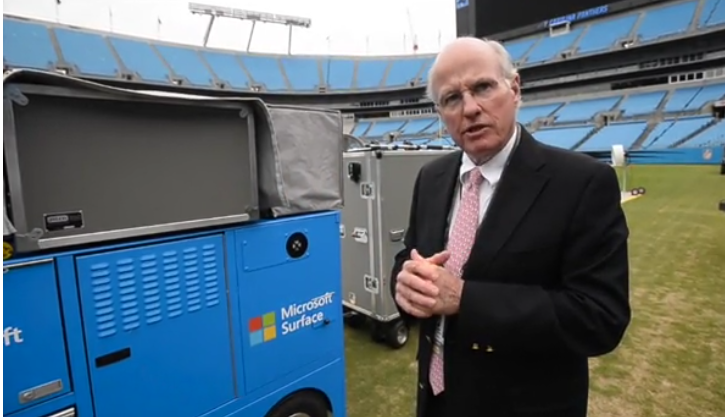Early in the second quarter of the Carolina Panthers’ victory over Philadelphia Eagles in Week 7, cornerback Josh Norman had a big collision with running back DeMarco Murray along the sideline.
As Norman started to get to his feet, Panthers linebacker Thomas Davis inadvertently bumped into him and knocked Norman back to the ground.
Head linesman Mark Hittner, watching this unfold a few yards in front of him, blew his whistle, waved his arms and had Norman leave the game to be evaluated for a possible concussion.
An angry Norman was directed to the bench by Panthers linebacker Luke Kuechly, then returned after sitting out one play. Norman didn’t have a head injury.
But in today’s NFL, game officials – as well as those in the league office – say they would rather err on the side of caution when it comes to head injuries.
“The official of his own volition stopped it because he had identified a player he thought needed some assistance, which the officials are encouraged to do,” said Jeff Miller, the NFL’s senior vice president of health and safety. “So that was a good thing that we see more and more from the officials, where maybe in previous years that wasn’t part of their portfolio but is increasingly so now.”
The NFL implemented a new concussion spotting mechanism this year that was dubbed “the Edelman rule,” after Patriots wide receiver Julian Edelman.
In the fourth quarter of the Super Bowl in February, Edelman caught a pass from Tom Brady and took a big hit from Seattle safety Kam Chancellor, leaving Edelman unsteady on his feet.
A reporter from the Detroit Free-Press overheard the league’s injury spotter in the press box trying unsuccessfully to get the game stopped so Edelman could be checked for a concussion.
But with the Patriots down 10 and running a hurry-up offense, Edelman remained in the game and caught another pass during the drive, after which he crawled on the ground.
At the league meetings in March, owners voted to give medical spotters the authority to stop the game to have a player evaluated for a concussion. The spotters, who are certified athletic trainers, have a direct line from the press box to the referee via a headset.
Miller said the Edelman situation was one of several that prompted the league to expand the role of the concussion spotters.
There have only been two booth stoppages through the first eight weeks of the regular season, the first of which came during the Pittsburgh-St. Louis game in Week 3.
Spencer Elliott, an athletic trainer in Novant’s sports medicine division, has been the Panthers’ medical spotter since 2011 when the league put an extra set of eyes in the press box to look for potential injuries that might be missed by the trainers, team doctors and independent neurologists at field level.
Elliott and Ben Clanton, a video technician, sit in a tiny booth in the corner of the Bank of America Stadium press box. Their perch is crammed with two TV monitors, a computer, a two-way radio, a landline phone and a pair of binoculars.
Elliott can alert team doctors to potential injuries via communication stations on both sidelines that include monitors where the on-field medical staff can watch replays sent from the booth.
In a bit of foreshadowing more than an hour before the start of the Panthers-Eagles game on Oct. 25, Elliott said officiating crews had been more diligent in looking for players with possible head injuries.
“You’re also seeing this year the referees and crews are doing a great job of stepping up and (saying), ‘Hey, you need to come out of the game,’” Elliott said.
And while Norman turned out to be fine, the NFL is trying to be more safe than sorry.
